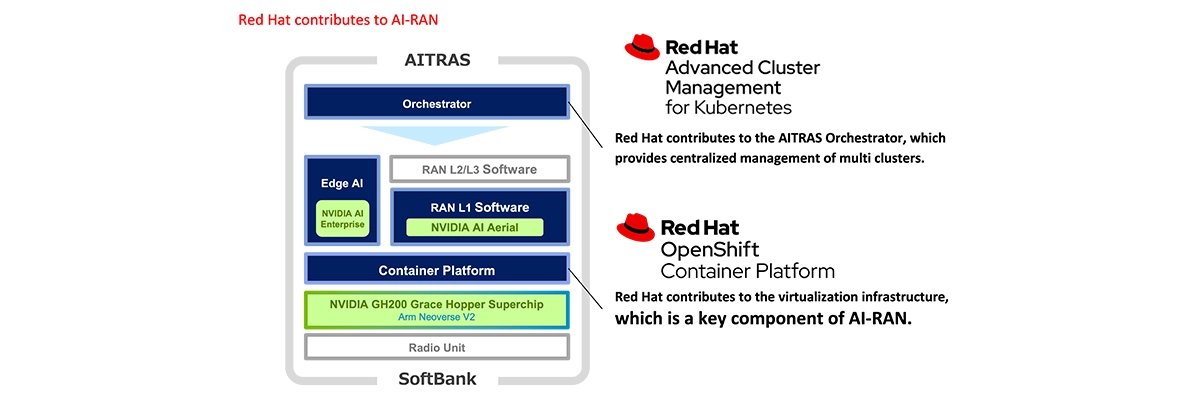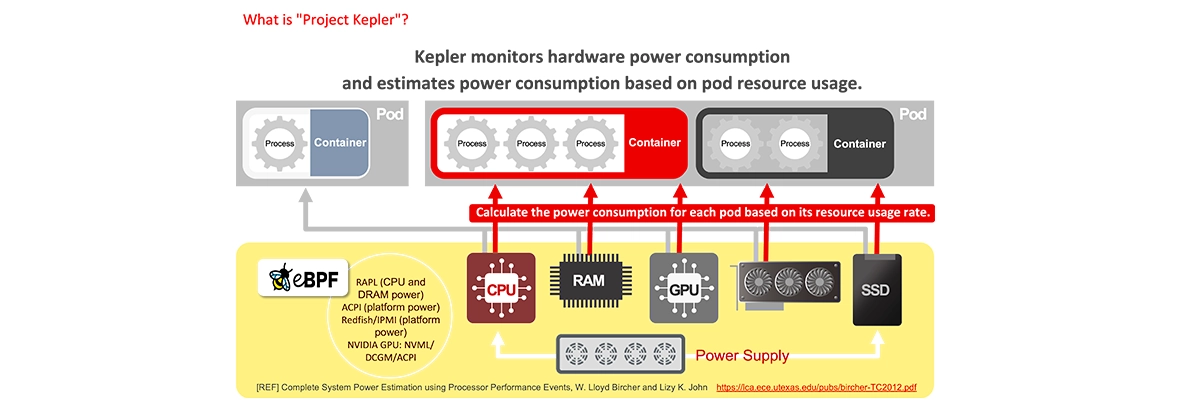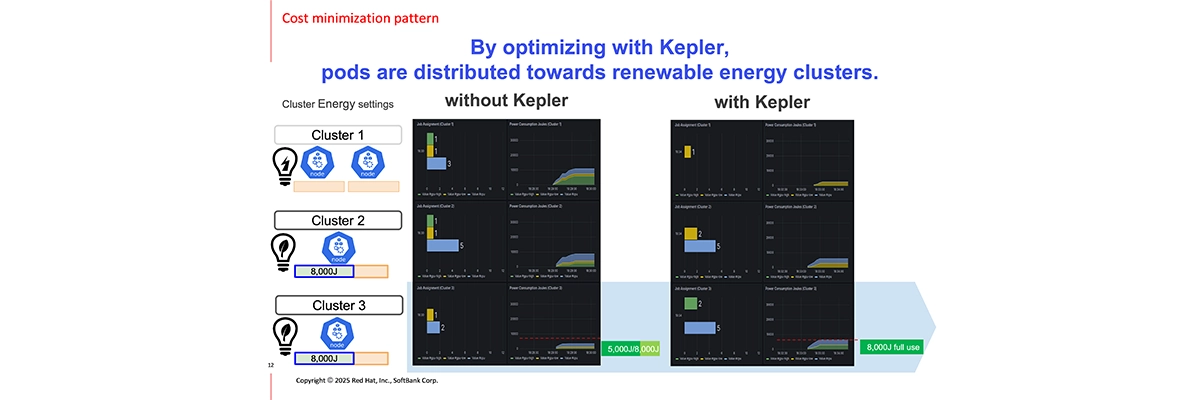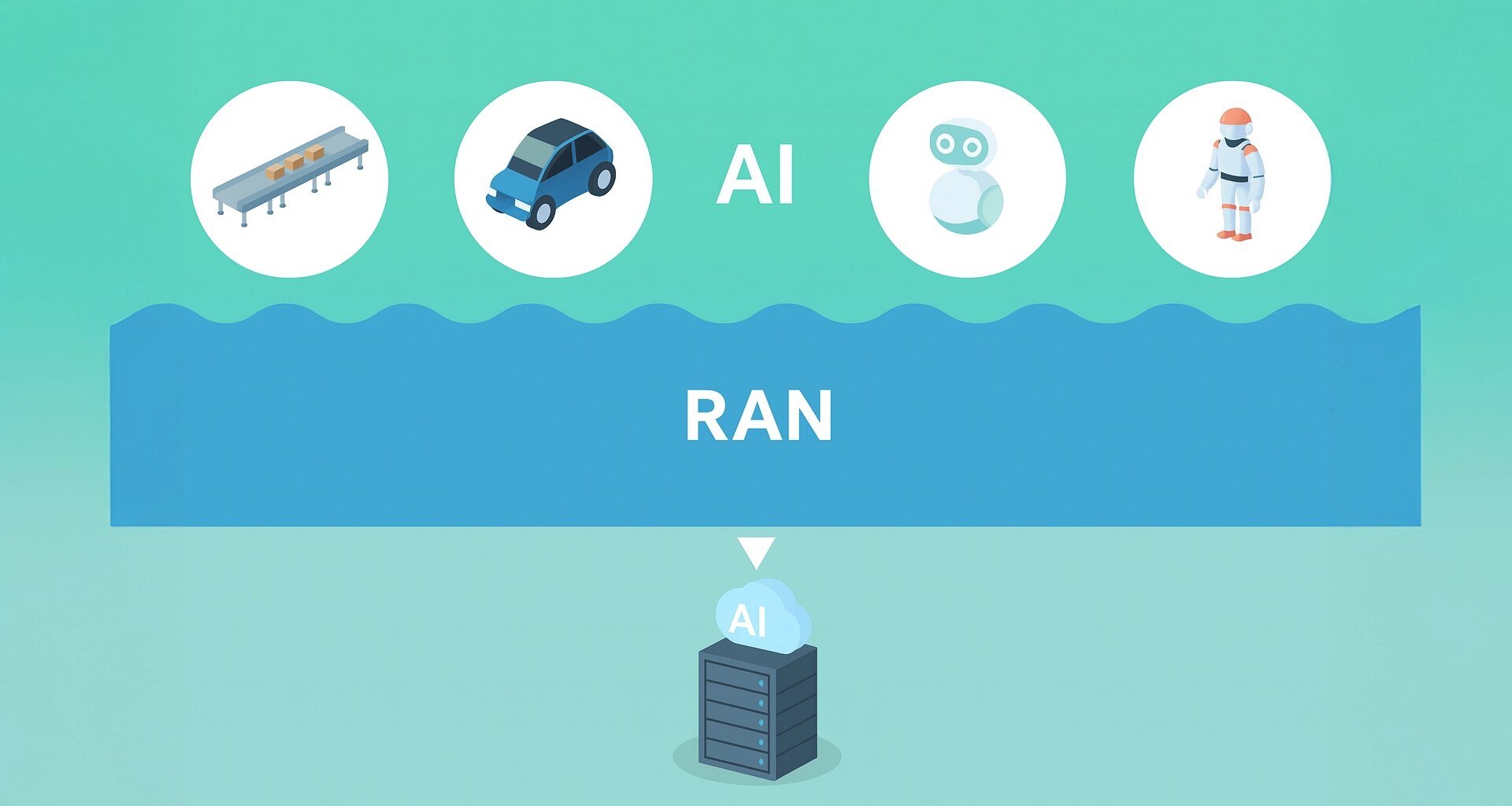3. Joint Development with Red Hat: Power Optimization Using Kepler
SoftBank envisions deploying AITRAS-based GPU data centers across Japan. However, maintaining stable operations at scale requires significant power consumption. To address this, SoftBank and Red Hat jointly developed a power optimization solution within AITRAS.
3.1 AI and RAN on a Common Computing Platform with Red Hat
Figure 2 illustrates the system architecture. AI and RAN applications operate as containers on Red Hat OpenShift, while Red Hat Advanced Cluster Management for Kubernetes enables unified control across multiple regional data centers.

Figure 2. Red Hat System Architecture in AITRAS
3.2 Introducing the Power Monitoring Tool “Kepler”
Kepler, or Kubernetes-based Efficient Power Level Exporter, is a project founded by Red Hat’s emerging technologies group with early contributions from IBM Research and Intel. It is a community-driven, open source project that captures power-use metrics across a wide range of platforms, focusing on reporting, reduction and regression so enterprises can better understand energy consumption. By leveraging Kepler with AITRAS and Red Hat OpenShift, it becomes possible to visualize the power usage of applications running on AITRAS at the Pod level. Figure 3 illustrates how Kepler monitors and tracks power consumption for each Pod.

Figure 3: Visualizing Power Consumption with Kepler
Leveraging Kepler’s capabilities, we designed a demonstration scenario to visualize and manage power consumption across different server clusters within a data center. The setup was as follows:
・Cluster 1: Powered exclusively by fossil fuel-based energy
・Clusters 2 and 3: Powered by renewable energy sources
In this context, where environmentally sustainable operations are prioritized, there is a clear need to favor Clusters 2 and 3 when deploying applications. Based on this need, the AITRAS Orchestrator was configured to allocate workloads to the most suitable clusters.
Figure 4 compares the results of application deployment with and without Kepler-based power-awareness. In the left diagram, where Kepler is not used, Cluster 1 (fossil fuel-powered) is heavily utilized. In contrast, the right diagram—where Kepler is introduced—shows that Clusters 2 and 3 are preferred, allowing for maximum utilization of renewable energy.
This demonstration confirms that by incorporating Kepler into the orchestrator, AITRAS can achieve not only optimized workload management but also more eco-friendly and energy-efficient data center operations.

Figure 4. Cluster Energy Usage Comparison With and Without Kepler Integration

